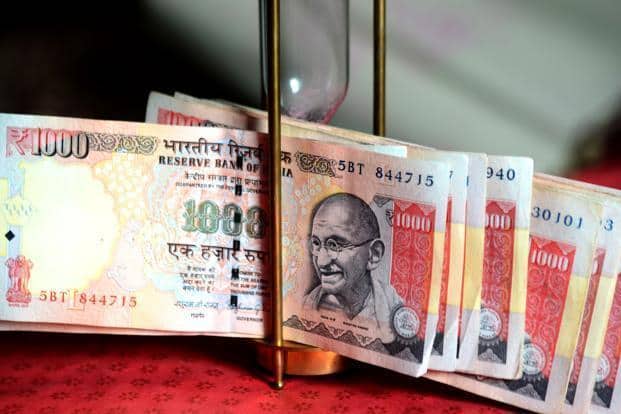With the financial budget just out, and rounds of economic slowdown, the discussion on Indian banknotes exceeds from the economic valuation to an other wise underrated aspect.
Colour is perhaps the most eclectic metaphor for defining India’s vibrance, a nation of 1.3 billion people possess an unmatched variety that lends itself to the long and hard striving multiculturalism which in turn adds enormous value to the social and economic tenets of India. Among various determinants available to us, the greatest testament to manifest this valuation of diversity is surely the Indian Rupee note that has enshrined itself in the mind scape of every single Indian.
Ever since the advent of liberalisation, the Indian Rupee has acclaimed a new definition and an equally significant presence in every strata of life. The introduction of Credit, Debit Or Value Add on Cards had negligible affect especially in the non metro lands, where payment apps are still searching for their grounds.
The country is facing an unprecedented economic slowdown and BJP Senior Leader and lawmaker Subramanian Swamy has pushed for inscribing an Image of Godess Lakshmi on the bank notes to resuscitate the Indian economy. The comment has reiterated to ponder upon the design and layout of the Indian currency and a discussion on what does each banknote signify.
The Reserve Bank of India is entrusted to design the banknotes after the approval of the Central Government and regulates it’s management on the basis of Reserve Bank of India Act, 1934. At present the Reserve Bank of India issues the ‘New Gandhi Series’ which came into existence after the Demonetisation in 2016. Prior to this, we had the Mahatma Gandhi Series which replaced the Lion Capital Series of notes in 1996.
The Indian notes have undergone big changes from time to time, with the inclusion of Rupee Symbol(?) designed by D Udaya Kumar in 2012 and etc. While the Mahatma Gandhi Series was available in denominations of ?5, ?10, ?20, ?50, ?100, ?500, ?1000, the heaviest two are no more in circulation and were withdrawn immediately after Demonetisation came into effect. While, many of us still miss the Mahatma Gandhi Series, it was soon replaced by the ‘New Mahatma Gandhi Series’ which revamped the cash pattern.
While the earlier version of the Gandhi Series highlighted heritage from every crump of India, the series with intaglio prints, fluorescent number panels, EURion constellations and Mahatma Gandhi on the obverse began with the ?5 edition with a green color and tractor image on the reverse to highlight the agrarian values and Green Revolution, the ?10 set had a blend of Violet and Orange with an image of Rhinoceros, Elephant and Tiger to potray our rich wildlife, the Orange shades of Mount Harriet, from Port Blair became the ?20 note, followed by the ?50 edition in classic violet portraying the Indian Parliament House building on the back, the ?100 note has a unique shade as well with blue and green in centre and brown and purple on the sides, the Himalayas from the North get featured on this edition of currency, next we have the ?500 edition which features the Dandi March on the back in another fresh mixture of orange and yellow, finally we have the ?1000 edition which featured the Indian Economic tenets in an Amber Red with shades of black and brown. While the final two notes of this series are no longer in circulation, rest of the denominations are.
The New Gandhi series which was seen as a byproduct of the Demonetisation experiment seemed to replace the Gandhi Series, with few addendums and omissions in denominations and lots of changes in the layout and design, some important changes include the Swachh Bharat Abhiyaan Logo, centred positioning of Gandhi’s image and Microprinting. Starting with ?10 set, new Gandhi series features the Konark Sun Temple in Chocolate Brown, followed by the ?20 one in greenish yellow capturing scenes from Ellora Caves, the new ?50 cult has a fluorescent blue base with an image of Hampi with Chariot in reverse, the ?100 denomination has a lavender shade featuring heritage site of Rani Ki Vav, the latest addition of ?200 unit has a bright yellow base with an image of Sanchi Stupa in reverse, the ?500 note has a stone grey shade with image from the ramparts of Red Fort, the final and the largest denomination of the Indian currency includes the ?2000 note in a magenta shade featuring the accomplishment of Mangalyaan mission.
While every fraction of the Indian Currency has a different shade and featured image, the overall approach is to highlight the variety of the Indian nation with accommodation of all aspects, it is further endowed with a language panel of seventeen languages for the linguistic diversity we possess, in the languages namely, Assamese, Bengali, Gujarati, Kannada, Kashmiri, Konkani, Malayalam, Marathi, Nepali, Odia, Punjabi, Sanskrit, Tamil, Telugu and Urdu, these are in addition to the English and Hindi used on the banknotes anyways.
Our Indian currency is unique and has greater significance than the economic valuation, this must be preserved as the diversity we endorse in our economic aspects and social praxis of Indian life.
Faizan Salik
Image Credits: Shutterstock


